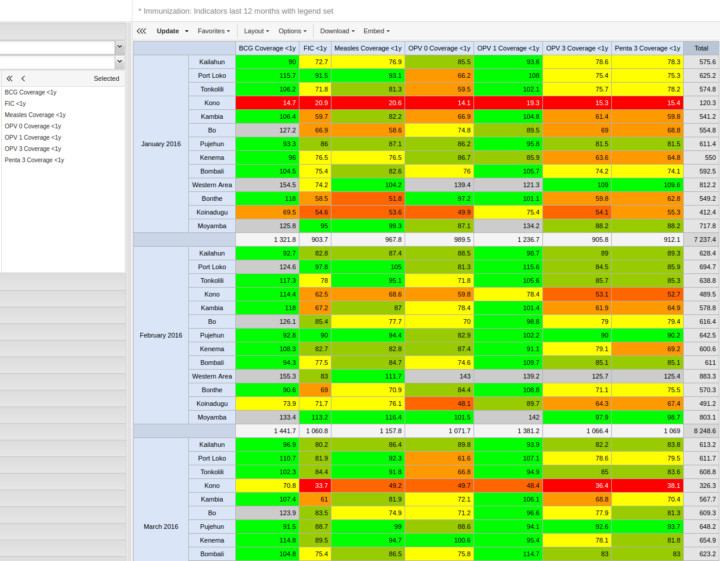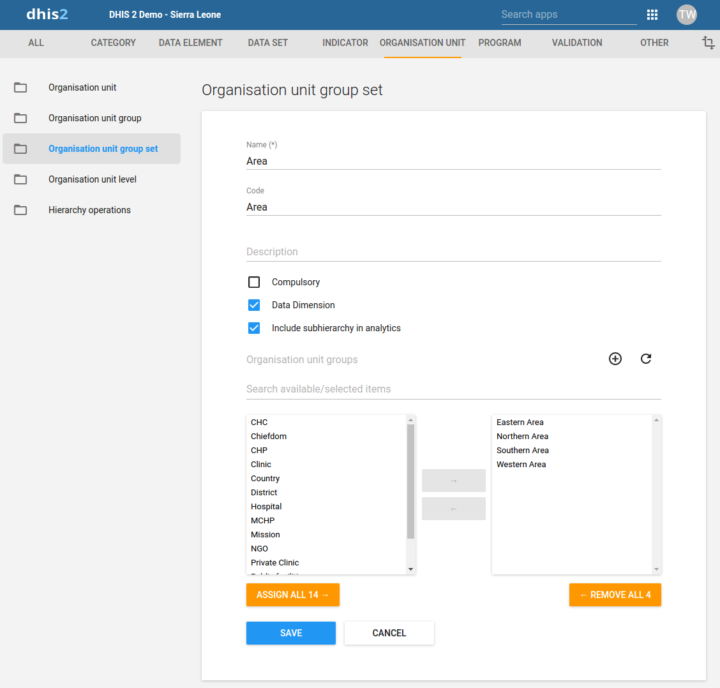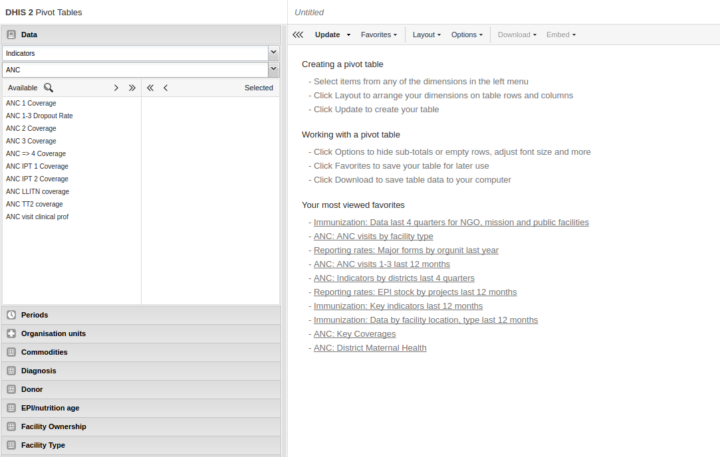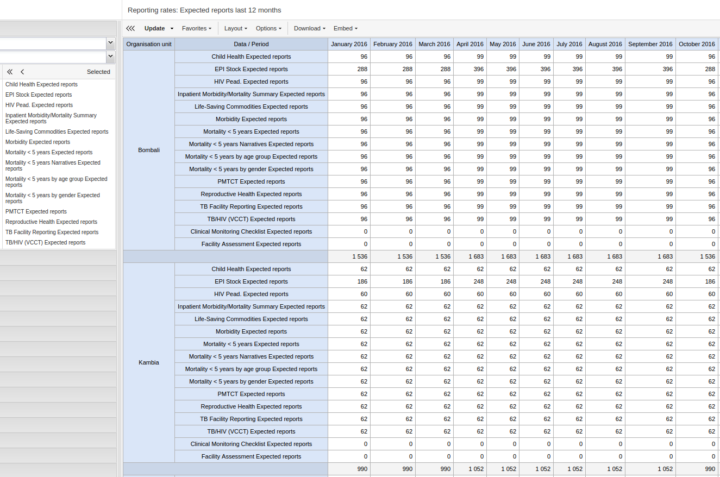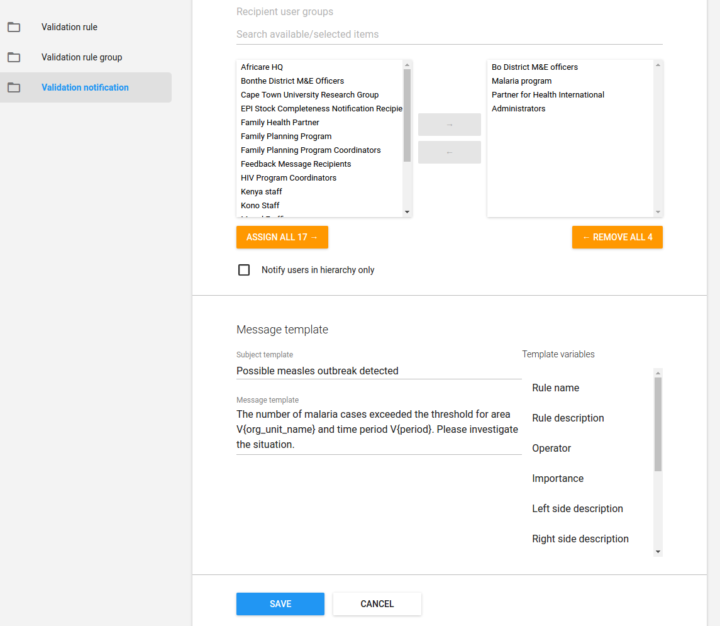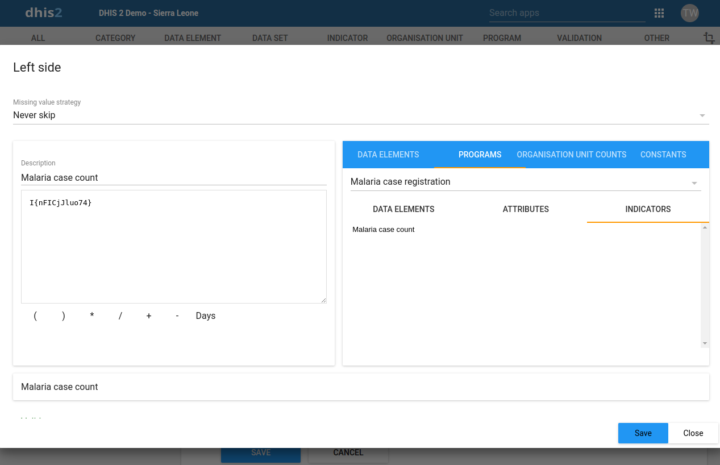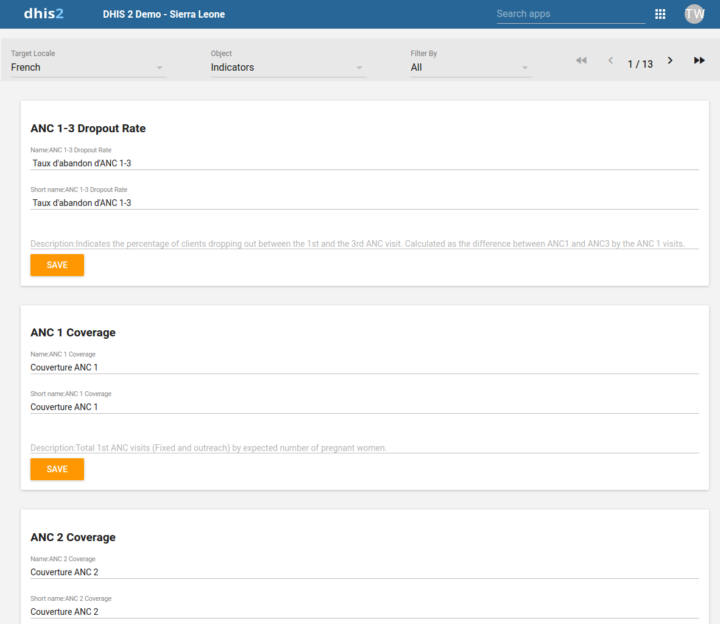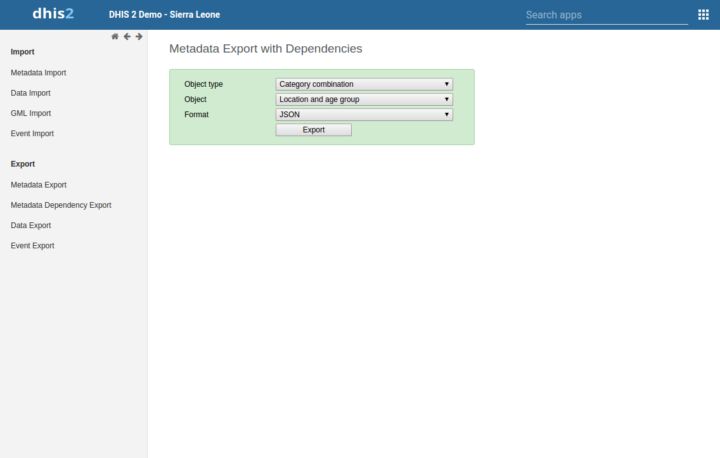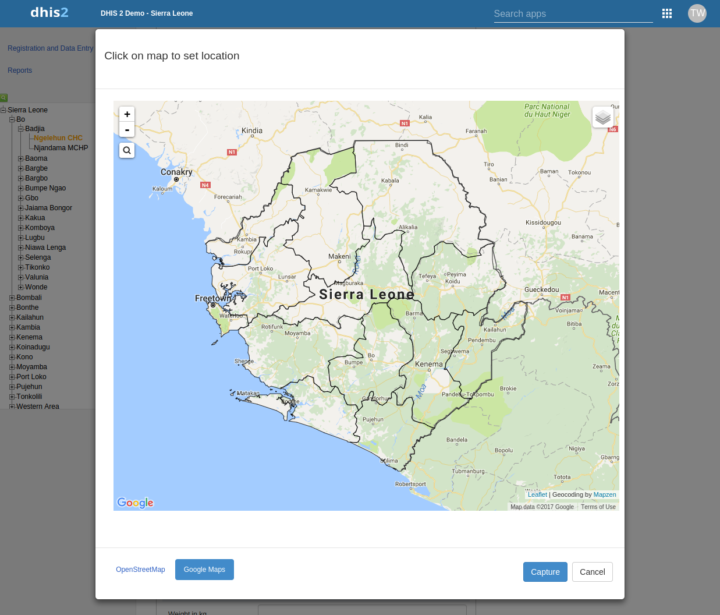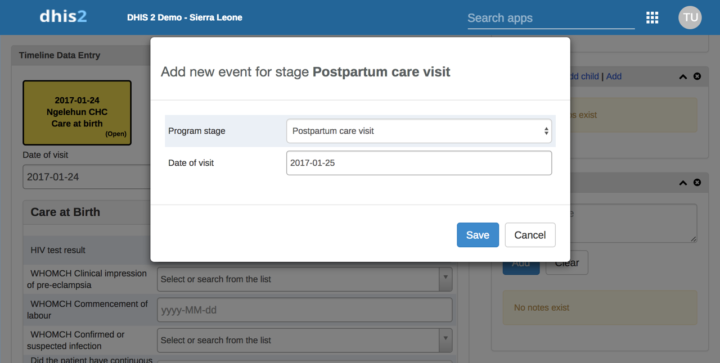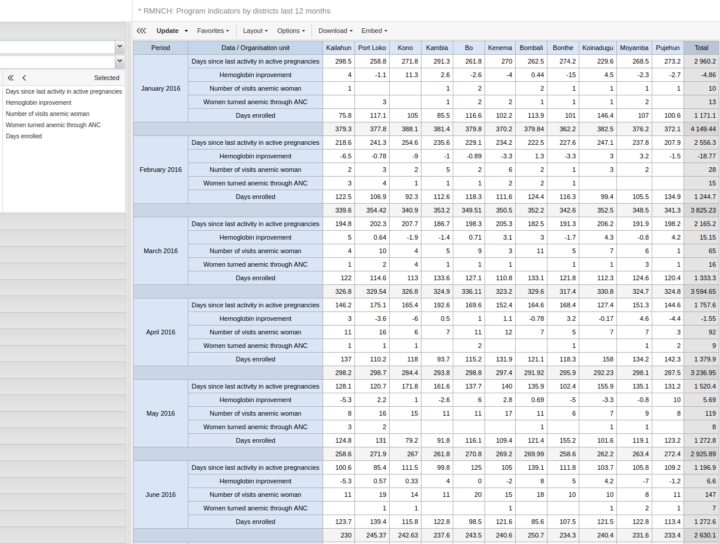
Enrollment analytics
Program indicators can now utilize a new aspect of the analytics engine for program enrollments. This implies that you can compare data values and dates from different stages and events within an enrollment. This allows for calculation of indicators such as “average inpatient bed days” and “hemoglobin improvement since first visit”.
[ Demo ] [ Screenshot ] [Documentation ]


